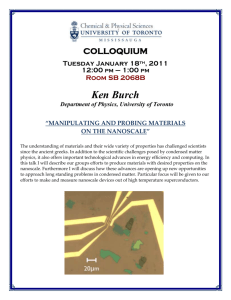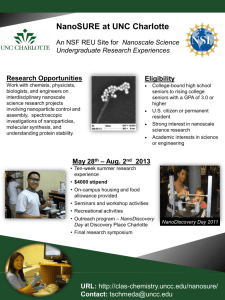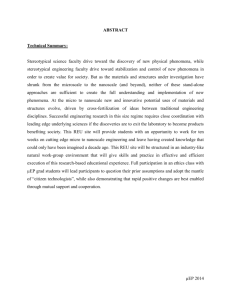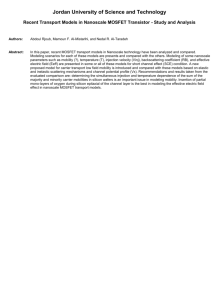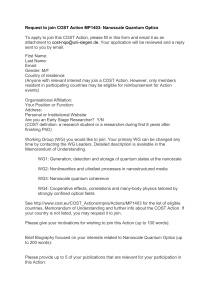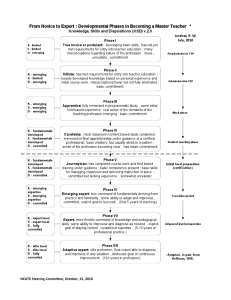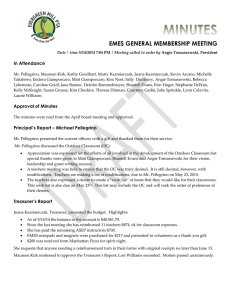Last year, faculty in Educational ... Hey, what’s the Big Idea?
advertisement
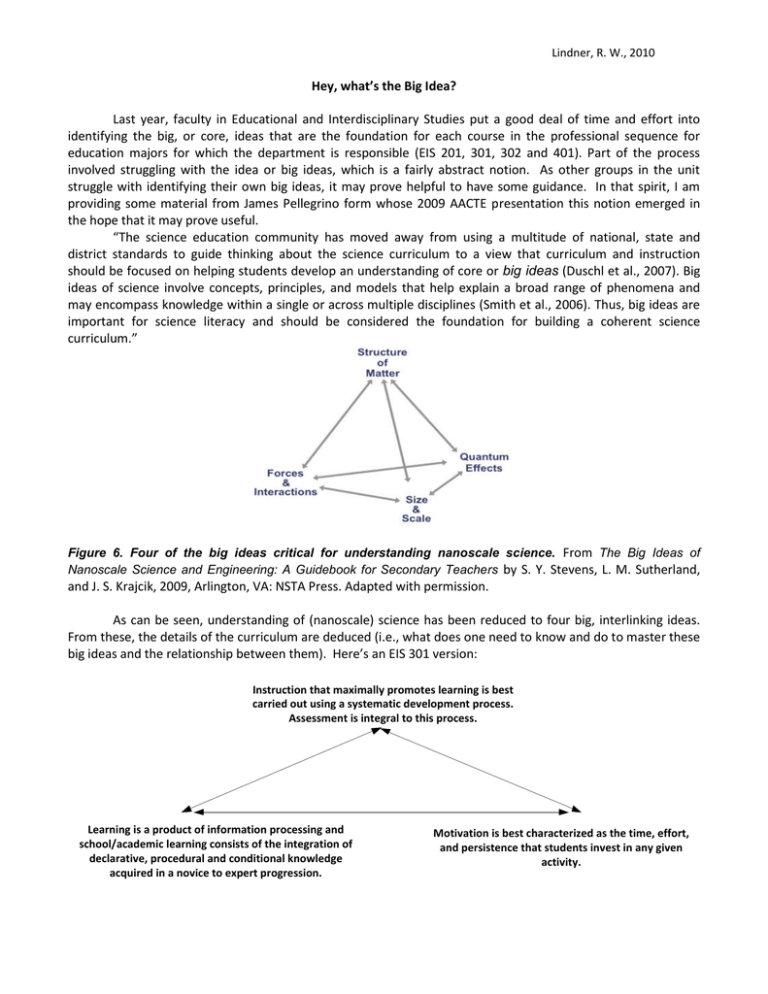
Lindner, R. W., 2010 Hey, what’s the Big Idea? Last year, faculty in Educational and Interdisciplinary Studies put a good deal of time and effort into identifying the big, or core, ideas that are the foundation for each course in the professional sequence for education majors for which the department is responsible (EIS 201, 301, 302 and 401). Part of the process involved struggling with the idea or big ideas, which is a fairly abstract notion. As other groups in the unit struggle with identifying their own big ideas, it may prove helpful to have some guidance. In that spirit, I am providing some material from James Pellegrino form whose 2009 AACTE presentation this notion emerged in the hope that it may prove useful. “The science education community has moved away from using a multitude of national, state and district standards to guide thinking about the science curriculum to a view that curriculum and instruction should be focused on helping students develop an understanding of core or big ideas (Duschl et al., 2007). Big ideas of science involve concepts, principles, and models that help explain a broad range of phenomena and may encompass knowledge within a single or across multiple disciplines (Smith et al., 2006). Thus, big ideas are important for science literacy and should be considered the foundation for building a coherent science curriculum.” Figure 6. Four of the big ideas critical for understanding nanoscale science. From The Big Ideas of Nanoscale Science and Engineering: A Guidebook for Secondary Teachers by S. Y. Stevens, L. M. Sutherland, and J. S. Krajcik, 2009, Arlington, VA: NSTA Press. Adapted with permission. As can be seen, understanding of (nanoscale) science has been reduced to four big, interlinking ideas. From these, the details of the curriculum are deduced (i.e., what does one need to know and do to master these big ideas and the relationship between them). Here’s an EIS 301 version: Instruction that maximally promotes learning is best carried out using a systematic development process. Assessment is integral to this process. Learning is a product of information processing and school/academic learning consists of the integration of declarative, procedural and conditional knowledge acquired in a novice to expert progression. Motivation is best characterized as the time, effort, and persistence that students invest in any given activity. Lindner, R. W., 2010 A suggested framework* for generating your big ideas: Step 1. Brainstorming – each individual involved in a particular program or area should generate at least three to five core concepts or principles they believe are essential in their domain or area. Step 2. Clarification and classification – as a group (or in small groups), clarify the proposed ideas and principles generated by individuals and assemble them into related categories. Identify any outliers, or specific items needing clarification. Step 3. Articulate and justify – develop a final framework along with a justification for why the concept or principle qualifies as a “big idea.” Along with the big idea framework, identify any and all related supporting concepts and principles that are prerequisite to understanding the big ideas. * Adapted from, Stevens, et. al., 2007. Useful sources (all available online): Pellegrino, J. W. (2009). The design of an assessment system for the Race to the Top: a learning sciences perspective on issues of growth and measurement. Exploratory seminar presented at the Center for K-12 Assessment & Performance. Pellegrino, J. W. (2006). Rethinking and redesigning curriculum, instruction and assessment: what contemporary research and theory suggests. Paper commissioned by the National Center on Education and the Economy for the New Commission on the Skills of the American Workforce. Stevens, S., Sutherland, L. A., Schank, P, & Krajcik, J. (2007). The big ideas of nanoscience. Unpublished manuscript.
